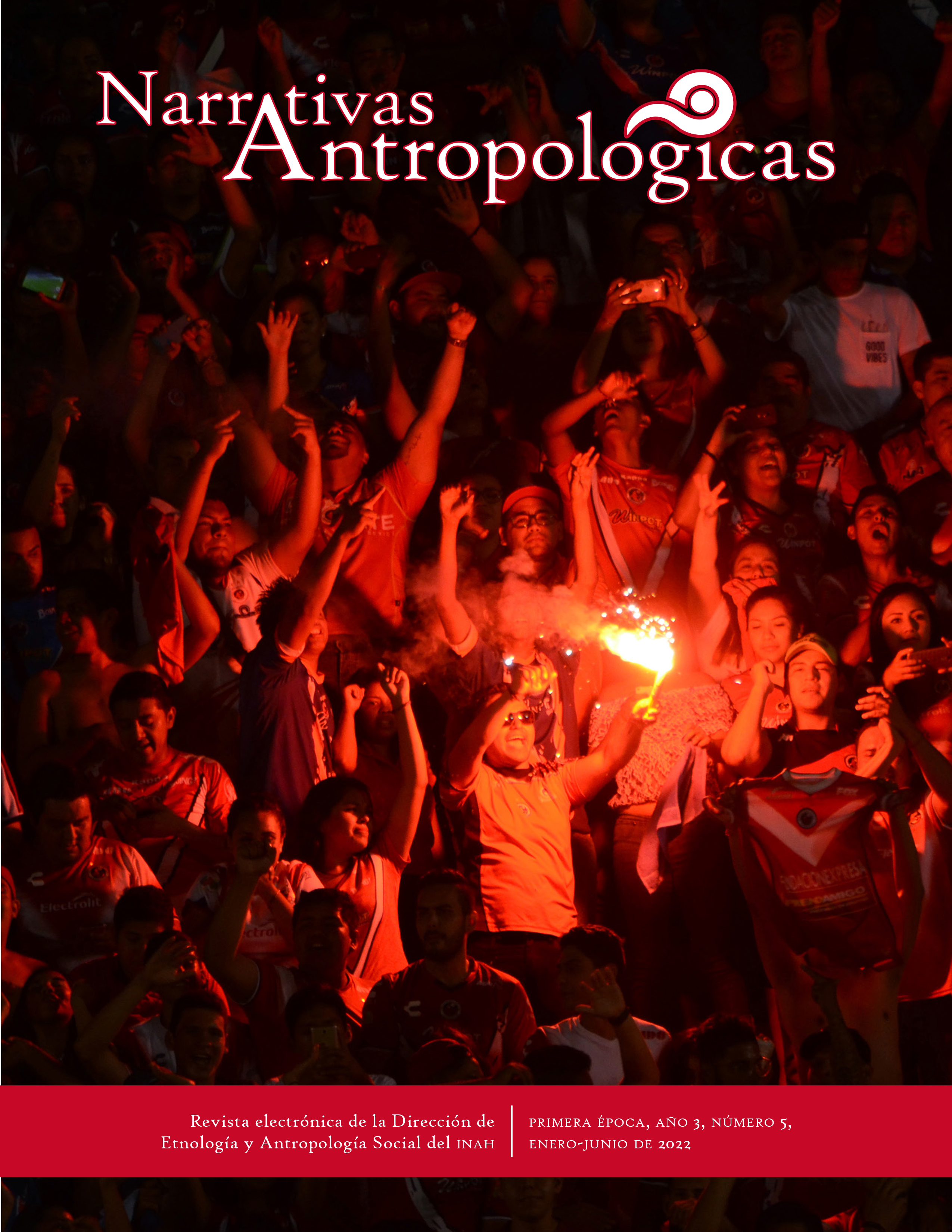Publicado 2022-01-19
Palabras clave
- San Dionisio del Mar, conservación-restauración, etnografía, trabajo con comunidades, trabajo de campo, patrimonio, ritualidad, COVID -19.
Cómo citar
Resumen
Durante la pandemia de 2020, la comunidad de San Dionisio del Mar hizo al INAH una solicitud para el movimiento y traslado de 16 imágenes religiosas a una Capilla Alterna, debido a los trabajos de restauración que se efectuarán en el Templo Antiguo afectado por los sismos del 2017. Ante esta situación, un equipo de la DAIC de la CNCPC-INAH, se trasladó a la localidad para trabajar en conjunto con el Comité del Templo y llevar a cabo el movimiento de una manera adecuada. El trabajo interdisciplinario entre la conservación-restauración y la etnografía contempla la vinculación social de las comunidades con sus herencias culturales materiales e inmateriales, permite comprender las dinámicas sociales y prácticas alrededor de las imágenes, así como su importancia, en este caso para los habitantes mareños y en especial hacia su Santo Patrón. La ritualidad, el mito, la tradición oral, el simbolismo y las formas de usos y costumbres propias de esta comunidad oaxaqueña, son elementos que entran en juego durante y después del traslado de sus santos y tienen impacto en su tradición ancestral y en la configuración continua de su propia historia y cotidianidad comunitaria.
Descargas
Referencias
- Sedesol (Secretaría de Desarrollo Social), “Informe anual sobre la situación de pobreza y rezago social” (México: Sedesol, 2017).
- Descola, Philippe, La selva culta: Simbolismo y praxis en la ecología de los Achuar [en línea] (Lima: Institut français d’études andines, 1988) (generado el 27 marzo 2017), acceso el 15 de noviembre de 2021, DOI: 10.4000/ books.ifea.1600.
- Millán Valenzuela, Saúl, “Etnografía de un pueblo del mar”, Diario de Campo: Ritos de paso 2, núm. 56 (2002).
- Beals, Ralph, y Harry Hoijer, “religión”, en Mito, rito, símbolo: lecturas antropológicas, recop. de Fernando Botero y Lourdes Endara (Quito: Instituto de Antropología Aplicada, 2000).
- Neurath, Johannes, Someter a los dioses, dudar de las imágenes. Enfoques relacionales en el estudio del arte ritual amerindio (Buenos Aires: Sb Editorial, 2020).
- Latour, Bruno, Nunca fuimos modernos: ensayo de antropología simétrica. (Buenos Aires: Siglo XXI, 2007).
- Rivadeyra, Pedro de, Flos Sanctorum, ó libro de la vida de los santos, 3a parte (Barcelona: Vicente Surià, 1688), acceso el 135 de noviembre de 2021, https://books.google.com.mx/books?id=iL9QAAAAcAAJ&printsec=frontcover&dq=FLOS+SANCTORUM&-hl=es&sa=X&ved=2ahUKEwihiuD28ZTuAhVCMawKHTPXBfIQ6AEwA-HoECAMQAg#v=onepage&q=FLOS%20SANCTORUM&f=false.
- Eliade, Mircea, “La estructura de los mitos: la importancia del mito vivo”, en Mito, rito, símbolo: lecturas antroplógicas, recop. de Fernando Botero y Lourdes Endara (Quito: Instituto de Antropología Aplicada, 2000).
- Lévi-Strauss, Claude, Antropología estructural (Barcelona: Paidós, 1987), 211-227.

